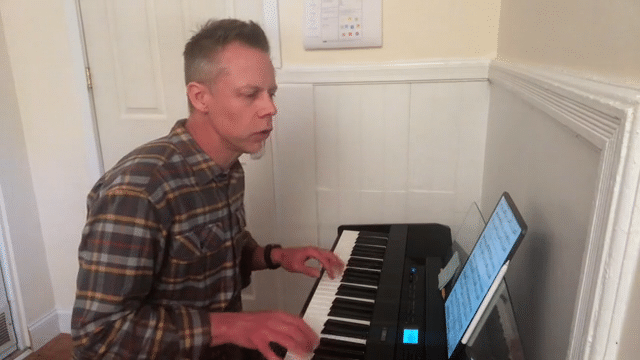Want an easy tool to help you start building the best team of your life?
That’s what the Team Transformation Canvas is: a practical worksheet to help you and your teammates discover the best in each other and put it into action.
The canvas facilitates individual self-awareness of your current emotional state and desired personal outcomes. It helps you develop a deepened understanding of what drives your behaviors and actions. By identifying and owning these intrinsic motivations, you align your future actions with your most inherent needs, creating your unique pathway to professional and personal self-actualization. Finally, the canvas facilitates deep emotional and supportive connections with each other — the building blocks of a high-performance team.
The canvas can be used as a solitary, contemplative exercise for self-improvement, or as a tool for bootstrapping a team toward intentional greatness.
For those familiar with the Core Protocols, the canvas facilitates a super-fast individual and team boot-up. Can’t go to a 5-day BootCamp? My 1-day class is too much of a time or travel commitment? My 1-hour keynote isn’t in a convenient location? Then boot yourself and your team in no time at all with the Team Transformation Canvas.
How to use the canvas
For starters, you can do the canvas on paper or electronically. To do it electronically, make a copy of the canvas and start filling it in. To do it on paper, print a copy, grab a pencil, and get to it.
Navigate the canvas any way you want to. Check the boxes and fill in the blanks. Think deeply and big — this is important stuff!
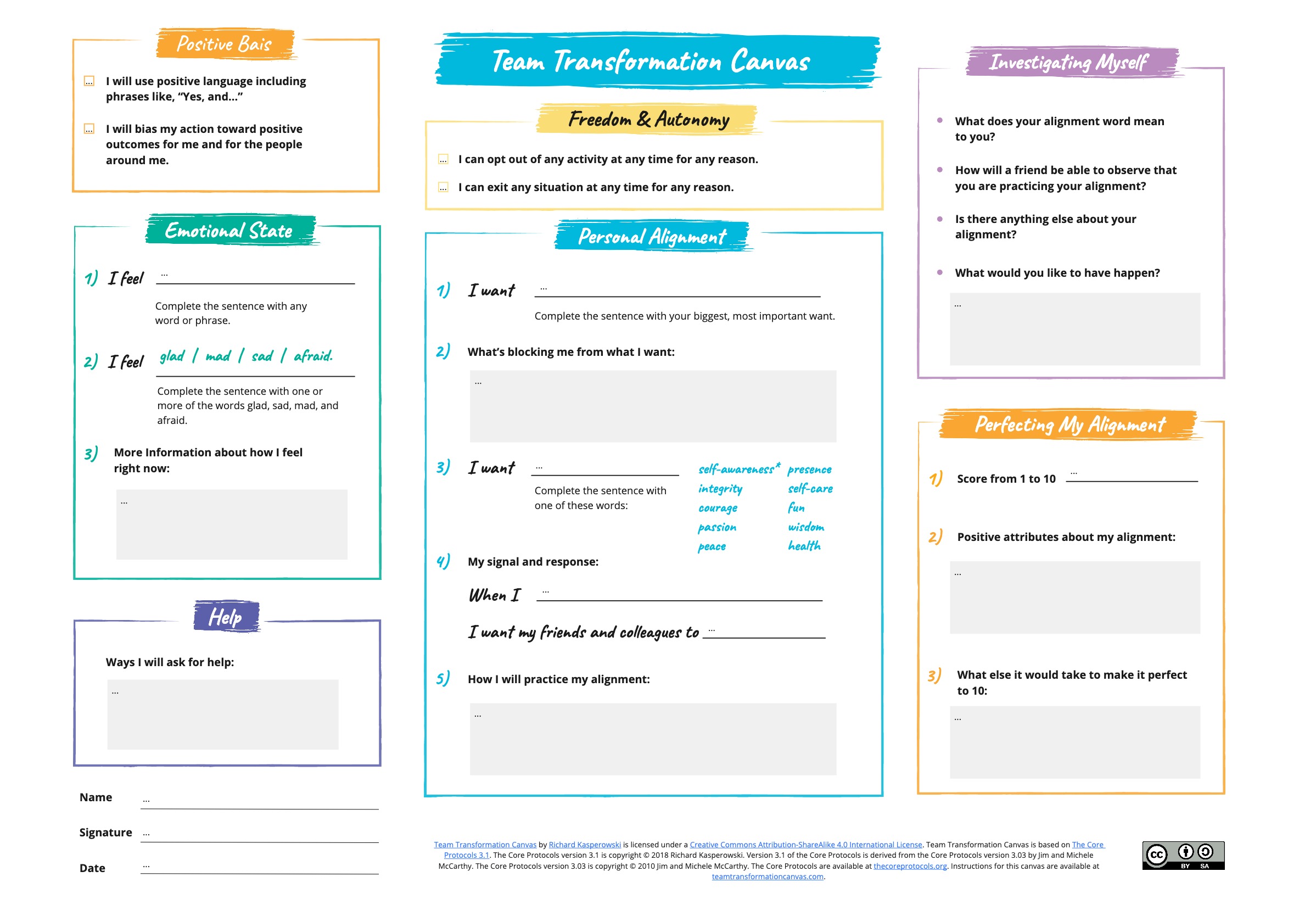
Getting started: Positive Bias, Freedom & Autonomy, and Emotional State
Positive Bias
Although the sections aren’t numbered, I do have a sequence in mind. I start with the Positive Bias box. Are you willing to consciously adjust the language you use, keeping it positive? Will you “yes, and” when you engage with the people around you? Will you tune your actions toward positive outcomes? If you’re in on this, check the boxes. Yes, really, actually check the boxes.
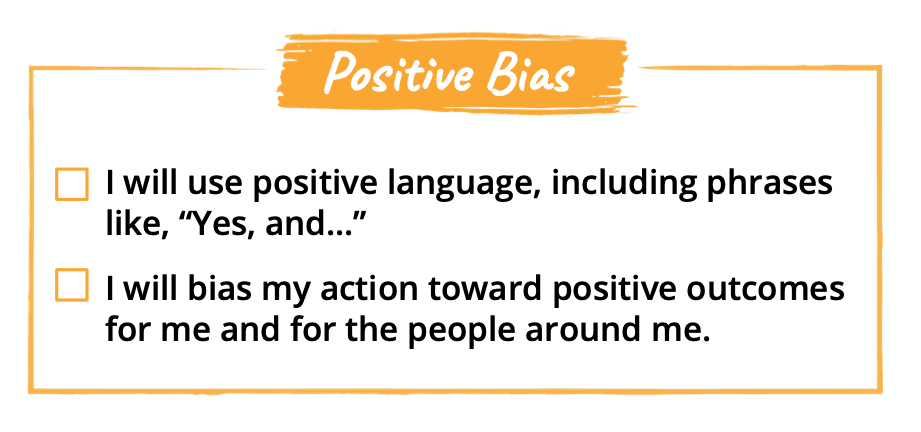
Freedom & Autonomy
Then I move on to the Freedom & Autonomy box. The two statements in this box correspond to the Pass and Check Out behaviors of high-performance teams: on high-performance teams, people can opt-out at any time for any reason. These two statements ensure you have a psychologically safe environment. Are the statements true for you? What can you do to create an environment of safety within which to complete the canvas and work together with your team? When you’re ready, check the boxes.

Emotional State
box comes next. How do you feel right now? Fill in the blank on the first statement — “I feel _____.” Which primary emotion word (or words) most closely matches how you feel right now? Select that word (those words) in the second “I feel _____.” What else can you say about how you feel right now? Check in with yourself, reflect deeply, and add as much detail as you can. This box corresponds to the Check In behavior, where you identify, articulate, and share your emotional state. For bonus points, show your canvas to a friend and share how you feel with each other.

Moving forward: Personal Alignment
Personal Alignment
Let’s move on to the Personal Alignment box, which corresponds to the Personal Alignment protocol. Reflect deeply again: What do you want the most? Think big — really big, bigger than “I’m hungry and want a slice of pizza.” Try something like, “I want world peace.” What is the most important thing in the world to you? Fill in the first blank with your answer.
Why don’t you have it? If you filled in “I want _____” honestly, it was something that you want, not something that you have. Or it’s something that you don’t have all of. Why don’t you have it, or why don’t you have all of it? What’s blocking you? Fill in the blank with your answer.
Now imagine that you could choose a superpower. Your choices for your new superpower are virtue words like self-awareness, presence, and self-care. Pretend that you could practice this virtue so much that you became an expert at it; that you could wield all of that virtue that exists in the universe. Imagine that you could become a ninth-degree black belt in that virtue. Envision your future self channeling your virtue’s power so effectively that you could eliminate everything that’s blocking you and get everything you want, especially that big, important want that you already identified. Which virtue would it be? Select one from the list and fill in the blank. (Hint: If you’re not sure what you want, choose self-awareness.)
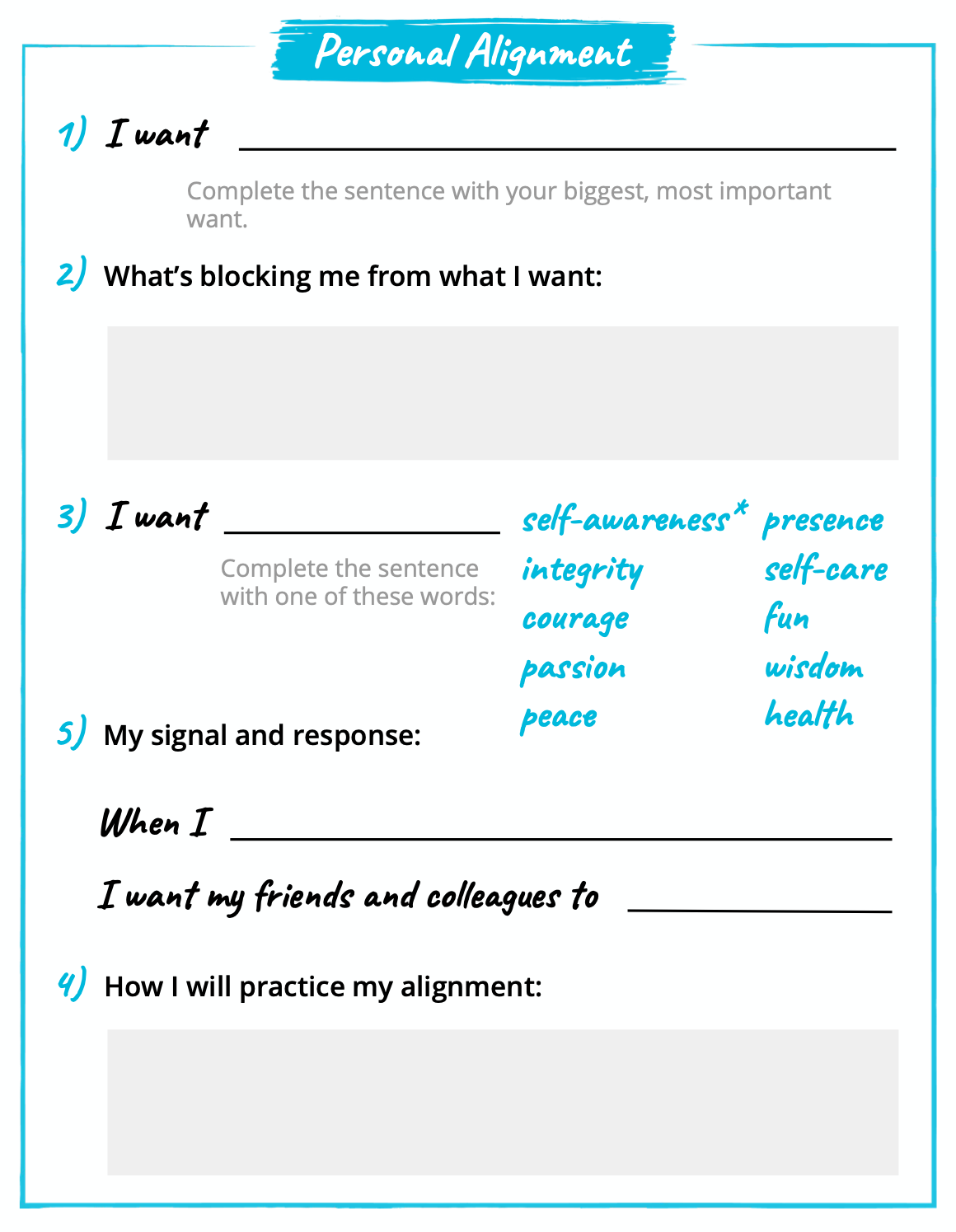
How could you let a friend know that you’re trying to practice that virtue? That’s your signal. Fill in the blank with your signal. It could be as simple as telling a friend, “I’m practicing self-care,” or it could be a gesture or motion you make with your body. How would you want a friend to respond? That’s your response. Fill in the blank with your response. It could be as simple as your friend saying, “I support you!” or it could be a gesture of support, applause, or anything else that would help you.
That virtue that will become your superpower — it won’t just happen. You’ll have to practice it. How will you practice? Exactly what will you do, every day, to hone that skill? Think and write your best answer. Here’s an example. Once upon a time, my virtue was courage. For me, courage meant rising to my fears. One thing I feared was meeting new people. So to practice courage, I met a new person every day. I got to know them a little bit. And every day, I wrote that new person’s name in my journal. Can’t think of anything? Just journal — every day, write three examples of having practiced your virtue.
Wrapping things up: Investigating Myself, Perfecting My Alignment, and Help
Investigating Myself
From there, I move on to the Investigating Myself box. Dig deeper into your Personal Alignment. Ask yourself big questions and do your best to answer them. Investigate yourself. The virtue word you chose — your Personal Alignment — what does that word mean to you? How would a friend be able to observe that you’re practicing it, or that you’ve been practicing it? What else can you say about your future superpower? What would you like to have happen? (I borrowed those last two powerful questions from the Clean Language body of knowledge.) Fill in the box with your thoughts. For more bonus points, show your canvas to a friend and share what you’re thinking about your Personal Alignment.

Perfecting My Alignment
From there, move on to the Perfecting My Alignment box. Use the Perfection Game tool to improve your Personal Alignment. Give yourself a score from 1 to 10 — how good is your Personal Alignment, how much better could it be? What are its positive attributes? What else could you do to make it a perfect 10? Fill in the blanks with your answers. And if it’s not a perfect 10 yet, go back to the previous boxes and make improvements!
Developing your new superpower and unleashing all your greatest wants won’t be easy. You’ll definitely want to Ask for Help. Exactly what help will you ask for? Who will you ask? Exactly how will you ask them for help? In the Help box, write your answers.
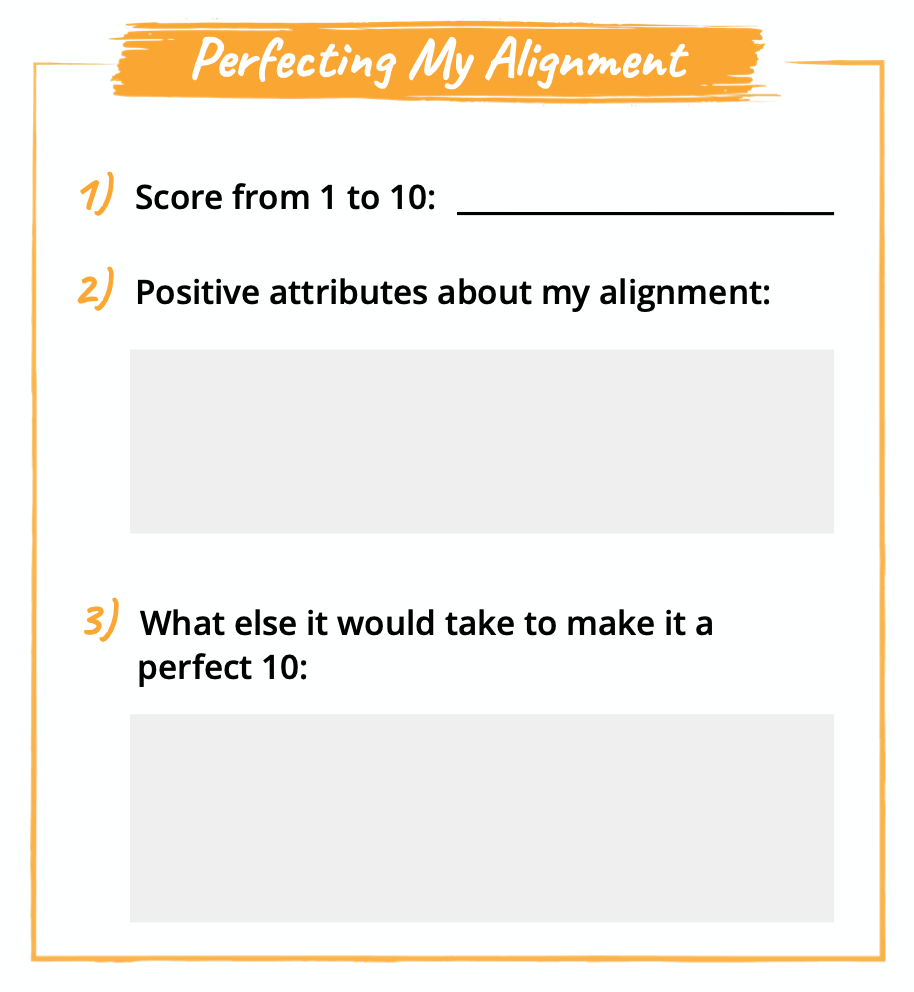
Now what?
That’s it — the Team Transformation Canvas. That was the Start With You part. What about the Awesome Team part? Doing the canvas alone is good. Doing it with your team — any other person or group of people you care about — is awesome. Try it with friends, teammates, your spouse, other family members … anyone you care about. Share your canvases with each other. Share your emotions with each other. Investigate each other. Perfect each others’ personal alignments.
Commit to each other and all the awesomeness you can have together. You’re gonna be great!





